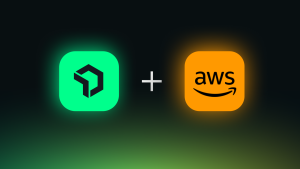As software architectures and services become more complex, DevOps, & ITOps as well as service management teams are grappling with a critical lack of visibility and siloed tools. Often insights are disconnected across tools and systems and finding the right data, stitching the entire context for troubleshooting is time consuming. This leads to difficulty pinpointing performance bottlenecks, and an inability or long resolution to resolve issues in particular during ongoing major incidents leading to outages and unhappy customers.
That’s why we’re excited to introduce New Relic’s agentic integration with Atlassian Rovo Ops in Jira Service Management, launching at Team ‘25 Europe. With this integration, service management, DevOps, and ITOps teams resolve incidents rapidly with unified, agentic workflows and Intelligent Observability insights in Jira Service Management, powered by New Relic AI.
Here’s how the Atlassian–New Relic agentic integration helps Service Management, DevOps, ITOps teams accelerate incident resolution.
- In-context performance data to support incident remediation: Instead of siloed, disconnected data across ITSM and several monitoring and observability platforms, New Relic telemetry data and changes flow directly into the Rovo Ops agent. This enables your service agents to quickly detect anomalies and incidents—like a recent commit being modified—without context-switching between multiple tools.
- AI-suggested fixes based on past incident data: Within the Rovo Ops workflow, New Relic agentically generates observability insights and intelligent actions (e.g., looping in a service owner to validate a commit), resulting in shorter mean time to resolution (MTTR).
- Automated post-incident review generation and learnings: After an incident is resolved, the Rovo Ops agent will pull in New Relic intelligent observability data and insights to automatically generate a post-incident review (PIR) report, supporting service agents in increasing the operational efficiency of their incident response and prevention strategies.
As an added benefit, we’ve built this integration so no complex or custom development is required.
In short, your service management teams can shorten incident mean-time-to-resolution (MTTR) increase customer satisfaction and improve operational excellence.
New Relic’s agentic integration with Atlassian Rovo Ops in Jira Service Management
And the business case for adopting agentic AI for both operations and service management is real. According to a December 2024 Forrester study, ITOps teams save an average of 55 minutes per incident when fully leveraging AI and automation capabilities in Jira Service Management. That significant time savings demonstrates a clear path to operational efficiency.
By unifying Intelligent Observability with agentic workflows directly in Jira Service Management, this integration accelerates incident resolution by eliminating context switching and providing actionable insights, eliminating toil and improving collaboration as well.
Getting started
The Atlassian–New Relic agentic integration is now in Limited Preview. You can join the preview today to shorten your MTTR.
Don’t have New Relic yet? Sign up for free and — includes 100 GB/month of free data ingest, unlimited free basic users, and immediate access to New Relic’s Cloud Cost Intelligence monitoring preview. Start optimizing your cloud computing platform and Kubernetes spend—no separate billing tool required.
The views expressed on this blog are those of the author and do not necessarily reflect the views of New Relic. Any solutions offered by the author are environment-specific and not part of the commercial solutions or support offered by New Relic. Please join us exclusively at the Explorers Hub (discuss.newrelic.com) for questions and support related to this blog post. This blog may contain links to content on third-party sites. By providing such links, New Relic does not adopt, guarantee, approve or endorse the information, views or products available on such sites.




